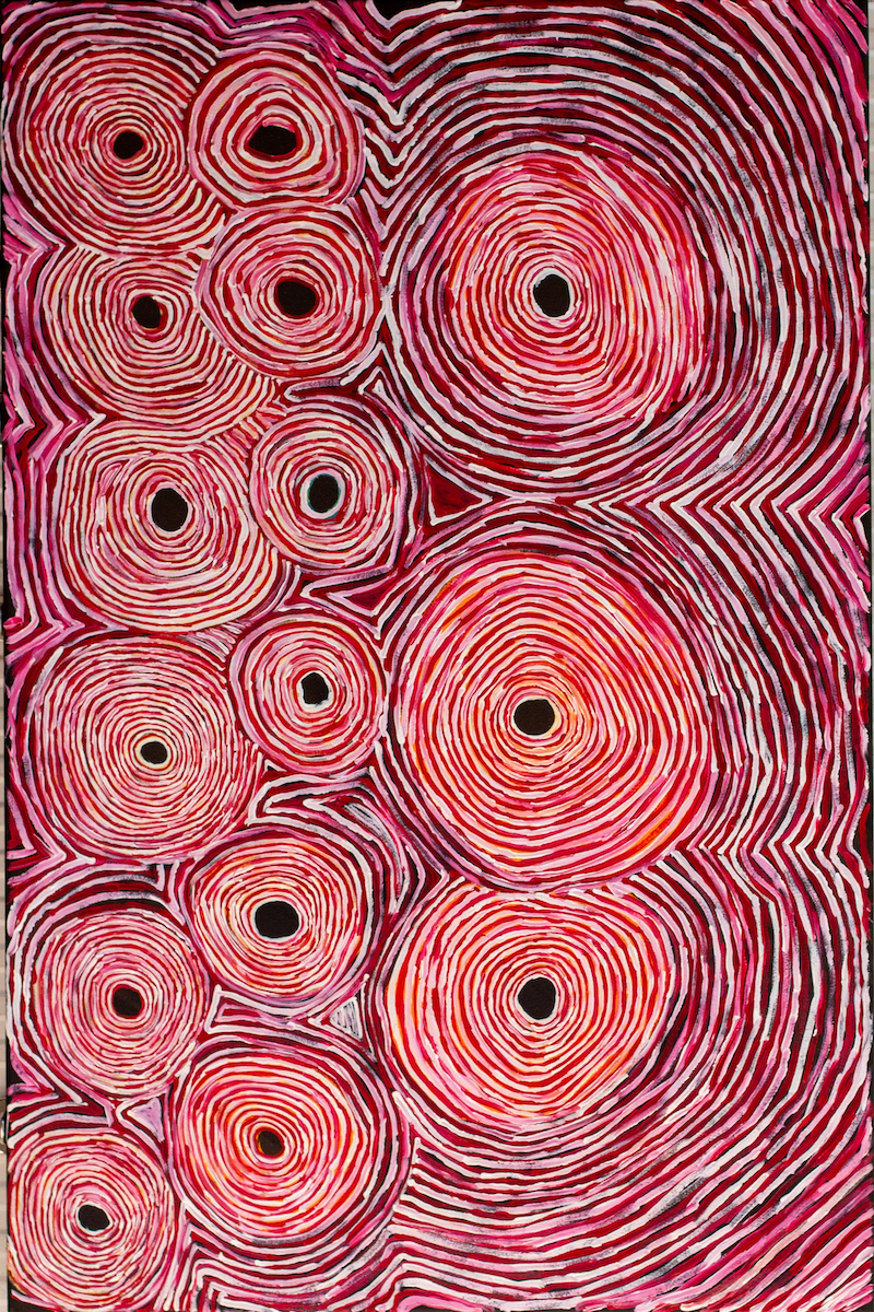Byron Brooks
Byron was born circa 1951 between Tjawar and Tjintirkara between a significant men’s , Wati Kutjara (Two Men) and Women’s, Kungkara (Seven Sisters) dreaming tracks adjacent to the SA border. Byron was transported to Cundeelee Mission via Kulkapin as a 10 -12 year old boy.
Although Cundeelee was over 500 kilometres from the closest point in the Spinifex homelands, life in Byron’s teenage years and entry into manhood would have been quite similar, in a concentrated form, to life in Spinifex. The Cundeelee missionaries (most unusual for those times), did not attempt to erase language and culture. In fact some encouraged and assisted in the logistics around cultural activity and some learnt and became proficient in the language. The Spinifex people lived in moving camps around the mission settlement in country not dissimilar to areas in Spinifex. Traditionally the disparate nomadic family groups could only come together in good seasons for cultural business. Here at Cundeelee these pre-conditions were a constant and the dissemination of Spinifex knowledge and cultural activity thrived.
Although he was not part of the Elders group who orchestrated the return to country when Byron returned to Spinifex in the mid-1980's, he immersed himself in to all things cultural as if making up for lost time. He started on the Men’s native title painting in 1997 and consistently painted thereafter collaboratively and individually. With his thirst for tradition at Cundeelee, Byron managed to infuse within his consciousness the deep knowledge of country, its stories and patterns and to express them in his prolific work.
As a collaborative artist, Byron has works in international and Australian collections and was a finalist in the WA Indigenous Art Awards, Perth, W.A, in 2008.
Byron paints with an understated delicacy that shows his unique and endless creativity. His knowledge of significant sites within the Spinifex Lands means he is often on country as others attempt to map his remarkable memory. Byron works with the Spinifex Rangers to manage 55,000 km2 of mostly inaccessible country.
Although Cundeelee was over 500 kilometres from the closest point in the Spinifex homelands, life in Byron’s teenage years and entry into manhood would have been quite similar, in a concentrated form, to life in Spinifex. The Cundeelee missionaries (most unusual for those times), did not attempt to erase language and culture. In fact some encouraged and assisted in the logistics around cultural activity and some learnt and became proficient in the language. The Spinifex people lived in moving camps around the mission settlement in country not dissimilar to areas in Spinifex. Traditionally the disparate nomadic family groups could only come together in good seasons for cultural business. Here at Cundeelee these pre-conditions were a constant and the dissemination of Spinifex knowledge and cultural activity thrived.
Although he was not part of the Elders group who orchestrated the return to country when Byron returned to Spinifex in the mid-1980's, he immersed himself in to all things cultural as if making up for lost time. He started on the Men’s native title painting in 1997 and consistently painted thereafter collaboratively and individually. With his thirst for tradition at Cundeelee, Byron managed to infuse within his consciousness the deep knowledge of country, its stories and patterns and to express them in his prolific work.
As a collaborative artist, Byron has works in international and Australian collections and was a finalist in the WA Indigenous Art Awards, Perth, W.A, in 2008.
Byron paints with an understated delicacy that shows his unique and endless creativity. His knowledge of significant sites within the Spinifex Lands means he is often on country as others attempt to map his remarkable memory. Byron works with the Spinifex Rangers to manage 55,000 km2 of mostly inaccessible country.



